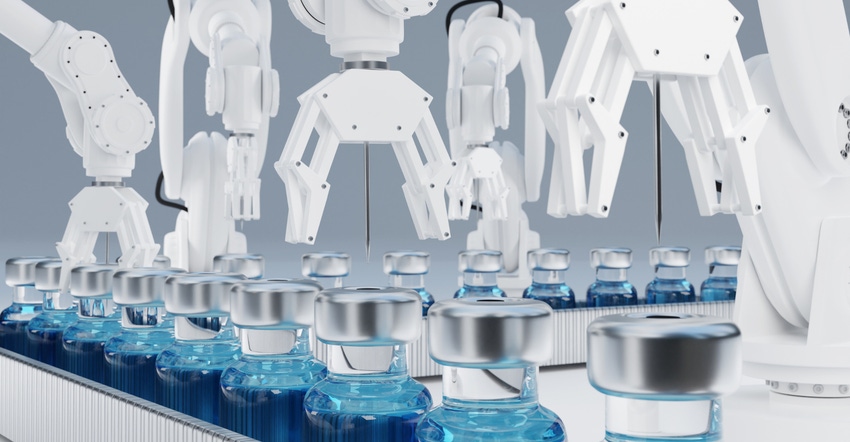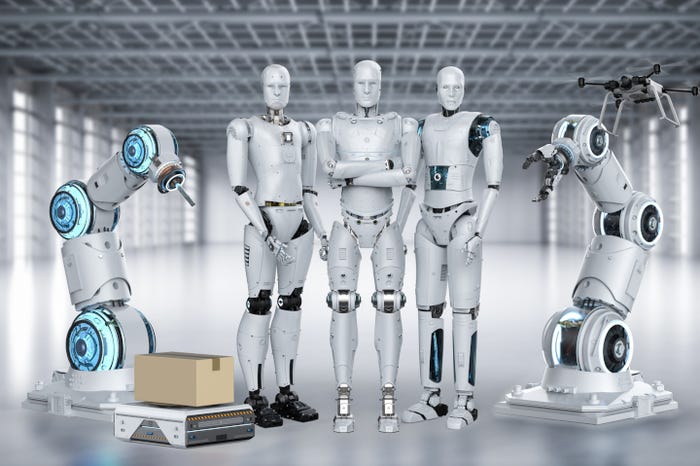Will the Future of Pharmaceutical Packaging be Like a Star Wars Film?
Robots are a given for packaging lines. But what about the viability of the cloud and Industry 4.0? One scenario will ensure packaging production will continue when problems crop up.

Are humans likely to be forced off the packaging line of the future by robots?
Despite this scenario sounding like something from a science fiction film, there is a real possibility that this could happen. After all, we are already witnessing a technological revolution, both figuratively and literally.
The fourth industrial revolution, or Industry 4.0, has already started to rewrite the DNA of packaging processes. The evidence for this is all around us — you can see it for yourself from just a quick visit to a typical pharmaceutical packaging operation. Like a scene from Star Wars, many functions are being carried out by robots. Long gone is the chatter of an army of people on the factory floor; instead, often all that can be heard is a multitude of space-age machines speaking with each other, all powered by the cloud.
Make no mistake about it, this was once the realm of science fiction. Even now, if you ask a child to draw a picture of what they think the future will look like, a robot is likely to feature in their work. However, that future is now here. Robotics are now a common sight on many packaging lines.

However, are they likely to fully take over? Imagine the scene — robots moving around the factory, scanners reading barcodes and other data, smart systems carrying out all quality control processes — without a single human to be seen, anywhere. Will the production and packaging of the globe’s medicines and drugs really be powered by the cloud in a galaxy far, far away? Are we really ready for a fully automated, cloud-based robotic packaging industry?
A Star Wars ideal?
Make no mistake about it, technology is vital for the future health of the pharmaceutical sector. There is no getting away from it — nor should we want to do so. Technology helps increase the efficiency of systems, products, and services. It helps track and streamline processes and maintain data flow. The cloud has rewritten the way computing works, allowing firms to power their systems, and retain full records, without a single server needing to be on site.
Indeed, from the perspective of those in charge of pharmaceutical packaging, with a reduction in costs and overheads being one of their constant priorities, the ideal will doubtless involve something modelled on Star Wars. The substantial initial outlay on technology will be expected to pay for itself further down the line, and once that break-even point has been reached, the firm will enjoy a much more cost-efficient packaging process with no staff costs to pay for.
Problems with the cloud galaxy.
Despite the huge advances in technology that can be witnessed on many packaging lines, it is nowhere yet near sophisticated enough to confidently enable a fully autonomous factory to exist with zero human intervention or supervision.
Even a basic power outage or internet disruption will cause serious issues, and problems with a cloud provider could prove devastating for a factory’s output.
Add to this the practical issue that virtually all production lines are running at an incredibly high pace. There are so many components working together that some, if not all, are usually powered by systems that are controlled on-site. If there is a problem and they go wrong, the chances are that the technology needed to fix them, such as the servers or control room, will be accessed somewhere on the premises.

Furthermore, there will always be some critical information or data that must stay on the premises. Indeed, an attempt to access the production line from the cloud is likely to result in a security threat, which could cause a shut-down if this security is breached.
A realistic future is the hybrid model.
A hybrid cloud model is a mixed computing environment where applications are run using a combination of computing, storage, and services in different environments. This might include public clouds and private clouds, including on-premises data centers or “edge” locations.
Indeed, a hybrid model such as this is likely to provide the biggest guarantee to packaging departments that production is likely to continue in the face of problems that could crop up anytime, such as the ever-present potential for a power outage. A practical example of this would involve small appliances, capable of powering the packaging machines during an offline period, including an uninterruptible power supply (UPS) battery backup. When the systems are back online, records are transferred to the cloud.
This hybrid model will also come into its own when it comes to security. An on-premises appliance will function solidly as a security gateway between the packaging line and the cloud.
Working alongside people, robots will increasingly become key to optimizing production and saving employees from doing monotonous and dangerous tasks.
Even when it comes to robotics, we are likely to see robots designed to interact physically with humans in collaborative environments. Working alongside people, robots will increasingly become key to optimizing production and saving employees from doing monotonous and dangerous tasks.
The safe use of technology is most likely.
Technology is vital for the pharmaceutical sector. It is shaping the way we all work, especially as Industry 4.0. continues to re-write the operations manuals of multiple firms.
A huge part of this technology is already powered by the cloud, a pattern that is likely to stratospherically increase over the coming years, especially as Industry 4.0. continues shaping the world around us. We will also, undoubtedly, see robots and artificial intelligence (AI) taking even more of a foothold on the factory floor.
So, we are moving towards the Star Wars model to a certain extent.
However, we will not see a complete reliance on the cloud, nor will we see a completely autonomous factory, or packaging line, any time soon. A hybrid model is needed to ensure the pharmaceutical packaging sector continues performing at its optimal level.
So, while we reach up to the clouds for part of the packaging journey and will definitely experience some of the thrill of the Star Wars model, we will soon return to earth with a bump for the rest of the ride.
About the Author(s)
You May Also Like




